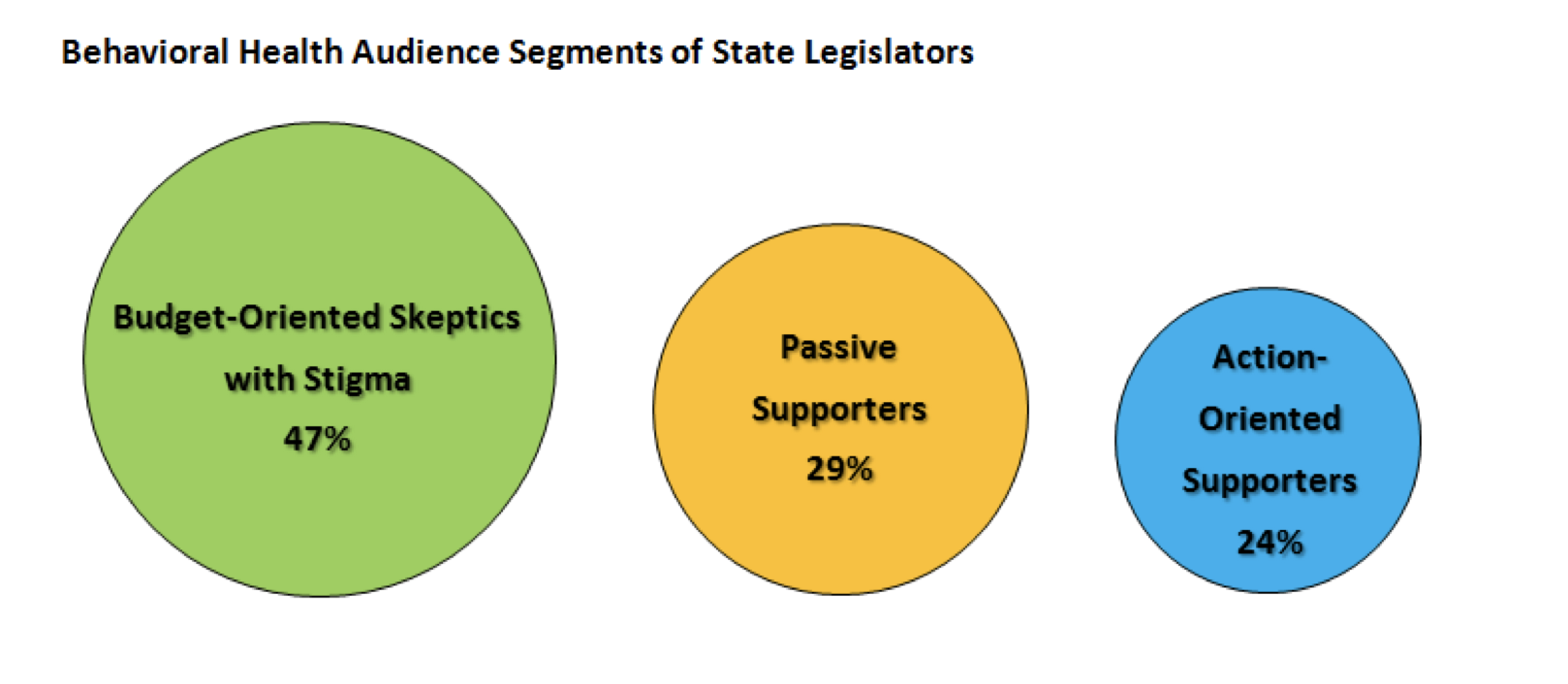Advocates who strive to improve public health can learn a lot from advertisers who strive to sell products. To sell products, advertisers follow a systematic “audience research” process to understand their consumers. First, they conduct formative research to understand consumers’ opinions about a product. Then, recognizing that people’s opinions vary, they conduct audience segmentation analysis to identify groups of people (i.e., audience segments) who share similar opinions. Finally, with this information, advertisers develop persuasive messages tailored for each audience segment. These tailored messages are generally more effective than “one-size-fits-all” messages.
In an ongoing project, we’ve adopted this audience research approach to figure out how to more effectively communicate evidence about mental health and substance use (i.e., behavioral health) issues to state legislators. In a prior study, we documented what legislators want to know about behavioral health issues and where they turn for this information. We found that they want data on cost-effectiveness and budget impact, and that they primarily get information about behavioral health from advocacy organizations, state agencies, and legislative staff. Universities were not a primary information source.
In a more recent study, we conducted an audience segmentation analysis to determine if and how opinions about behavioral health vary across groups of legislators. The study used data from a 2017 survey of 475 state legislators representing all 50 states. The survey asked legislators their opinions about behavioral health (e.g., beliefs about whether treatments can be effective, attitudes towards people with mental illness), what influences their support for behavioral health bills, and whether they have introduced behavioral health bills.

We found that three distinct audience segments emerged, and named each according to its most salient characteristics. Their largest segment of legislators we named Budget-Oriented Skeptics with Stigma (47% of legislators). These legislators had the least faith in behavioral health treatment effectiveness, had the most stigma towards people with mental illness, and were most influenced by budget impact when deciding whether to support a behavioral health bill. This segment was predominantly male, Republican, and ideologically conservative.
Action-Oriented Supporters (24% of legislators) was the smallest segment. These legislators were most likely to have introduced a behavioral health bill and to identify behavioral health issues as policy priorities. Their support for a behavioral health bill was substantially influenced by the extent to which it was evidence-based. This was the most ideologically diverse segment.
The third segment, Passive Supporters (29% of legislators) had the most faith in behavioral health treatment effectiveness and the least stigma towards people with mental illness. But they were the least likely to have introduced a behavioral health bill.
Knowing about these audience segments gives us a better understanding of how we might tailor messages for legislators with different characteristics. For example, for Budget-Oriented Skeptics with Stigma, we might want to emphasize information about how behavioral health treatments can foster recovery and data about the cost-effectiveness of these treatments. We might also adapt messaging strategies that have been shown to reduce stigma towards people with mental illness among the general public. For Action-Oriented Supporters, we might emphasize evidence about laws that have been shown to improve population behavioral health outcomes.
By adopting a market research approach, we hope to generate information that can enhance how we communicate evidence about behavioral health issues to state legislators. The ultimate goal is to cultivate bipartisan support for evidence-supported policies that are likely to improve the lives of people affected by mental health and substance use disorders.
Feature image: Andrii Yalanskyi/iStock. Graphic from the author.













